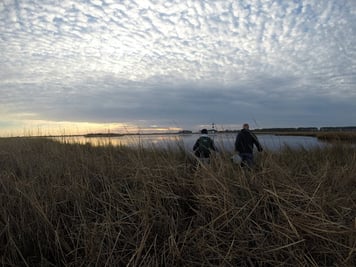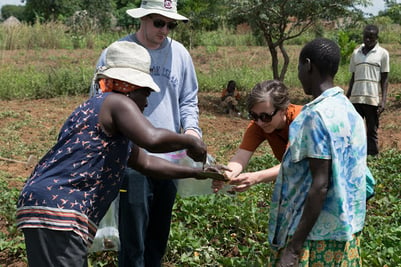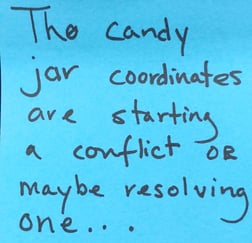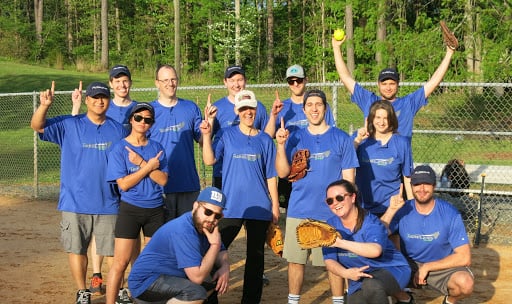Our company operates on a so-called self-managed system. Our employees enthusiastically embrace it, and communicate expansively about it. But what is self management? Does it just mean that you don’t have a line supervisor? Does it mean you can do whatever you want to, as long as you’re “managing yourself”?
 We often hear visitors say words of the sort, “Oh you guys have such a great culture. This must be such a fun place to work,” in reaction to the informal, non-deferential way we treat each other, the bright, open offices and labs, and the canine companionship we welcome on Fridays. But those are the most superficial signs of a culture—the smoke from the engine, or “artifacts” as coined by Edgar Schein. Schein defined culture as:
We often hear visitors say words of the sort, “Oh you guys have such a great culture. This must be such a fun place to work,” in reaction to the informal, non-deferential way we treat each other, the bright, open offices and labs, and the canine companionship we welcome on Fridays. But those are the most superficial signs of a culture—the smoke from the engine, or “artifacts” as coined by Edgar Schein. Schein defined culture as:
“a pattern of shared basic assumptions that the group learned as it solved its problems of external adaptation and internal integration, that has worked well enough to be considered valid and, therefore, to be taught to new members as the correct way to perceive, think, and feel in relation to those problems.”
So a company’s culture is actually what we value as a group (our beliefs) and how that gets manifested in our actions (our behaviors). For the system to work effectively, employees need to have a common understanding of why we have such a system, and how the company expects them to act within that system.


Sampling trips for AgBiome projects (left) and for a partnered project with the Bill and Melinda Gates Foundation (right).
We’ve taken a shot at codifying our values and the associated practices required to make those common assumptions a real, living thing. The result is this document that describes our beliefs and behaviors. Please click the link and read through the whole thing.
We had several goals while drafting this document: 1) make it sufficiently general and durable that it can apply to any business unit of the company, 2) make it principle-based, rather than rule-based, 3) describe aspirational, ideal behaviors that leaders need to strive toward practicing every day, and 4) spell out minimum behaviors that the company expects from everyone.
On top of its value as a theoretical tool for promoting common understanding, this document has practical, day-to-day utility. It helps us assess each other’s job performance. It’s much easier to figure out how much a developing leader is really growing by looking at a “scorecard” of how consistently they embody our desired behaviors. Similarly, it’s much less painful to deal with a job performance problem when someone isn’t living up to even our minimum behavioral standards. The document also clearly, consistently describes to job candidates what they are signing up for—if you want to work here, you must be willing to behave in these ways.
Note that the term “self-management” never appears in this document, despite many folks’ idea that the concept is core to AgBiome. We don’t believe that self-management is a one-size-fits-all concept with rules that can be rigorously codified and imposed on every kind of business or process. Individual accountability, direct connection of one’s own job tasks to the company’s purpose, control and coordination through peers, and reliance on intrinsic motivation can be applied to any job. But exactly how the individuals involved manage those critical components depends on the task in question, the specific nature of the transaction(s) involved, and, yes, the actual people doing the work. So rather than specify a management system, we prefer to lay out expected behaviors underpinned by immutable core beliefs.
 AgBiome is a hard place to work. Peer pressure forces people to be highly engaged in what they do and in their interactions with their coworkers. People who are resistant to receiving feedback or who avoid acknowledging their inevitable, natural conflicts, are constantly barraged with reminders about why their behavior is unacceptable. Stooping lower, people who assume ill will on the part of their colleagues, or promote their self-interest over that of the company, are warned, monitored, and, if the behavior persists, made to leave the company. That said, one of our minimum behaviors is “have fun.” If you’re willing to live in a high feedback environment, working at AgBiome isn’t a grind. It’s an energizing, enriching daily “routine” that’s typically not routine.
AgBiome is a hard place to work. Peer pressure forces people to be highly engaged in what they do and in their interactions with their coworkers. People who are resistant to receiving feedback or who avoid acknowledging their inevitable, natural conflicts, are constantly barraged with reminders about why their behavior is unacceptable. Stooping lower, people who assume ill will on the part of their colleagues, or promote their self-interest over that of the company, are warned, monitored, and, if the behavior persists, made to leave the company. That said, one of our minimum behaviors is “have fun.” If you’re willing to live in a high feedback environment, working at AgBiome isn’t a grind. It’s an energizing, enriching daily “routine” that’s typically not routine.
 AgBiome softball team 2018.
AgBiome softball team 2018.
For an organizational culture to work, strong alignment must exist between people’s shared basic assumptions and the values espoused by the leadership of the company. Our beliefs and behaviors statement makes explicit how people need to act for our culture to work. It gives actionable, day-to-day substance to the more abstract values described in our shared beliefs. On a practical level, it gives us tangible ways of thinking about and describing whether a particular behavior (and the individual or group that manifests it) are strengthening or weakening our culture relative to our shared desired state. It gives us a tool, in an area that is admittedly unmeasurable in an objective way, to gauge whether to reward or discipline someone.
We’ll continue to refine the document as we think more deeply about what matters to the company, and see which behaviors employees most fully embrace (and which ones seem hardest to practice and need more reinforcement).
And, despite the gravity of the subject at hand, having fun is one of our expected minimum behaviors, which we manage to live up to most of the time...
.png?width=299&name=AgBiome-Logo-color-registered%20(1).png)